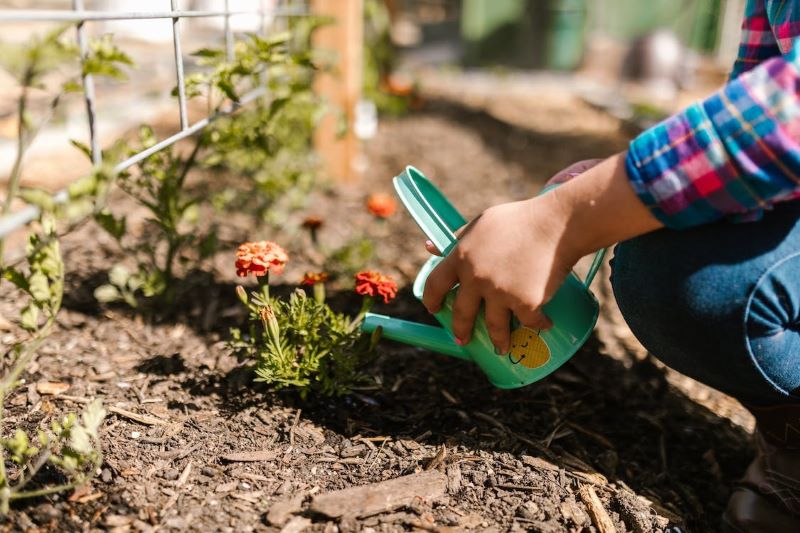Top Tips To Help You Get Your Garden Ready For Summer
Summer is just around the corner, and that means it’s time to start getting your garden ready for those sunny days of fun. Whether you’re a seasoned green thumb looking for tips to spruce things up or a first-time gardener trying to get your garden off on the right foot, this blog post has something for everyone. From soil health and plant selection to mulching and pruning, we’ve rounded up all of our top tips for getting your garden summer-ready in no time. With this expert advice and simple workflow background information, you’ll be sure that your garden will look its best so you can enjoy it all season long!
Start composting to help enrich your soil
Composting is a simple and effective way to give your soil the nutrients it needs to support healthy plant growth. By using food scraps, yard waste, and other organic materials, you can create a nutrient-rich soil amendment that will help your plants thrive. Not only does composting provide a natural and cost-effective alternative to chemical fertilizers, but it also helps reduce waste and supports environmental sustainability. With a little effort and commitment, you can start your own compost pile and take an important step towards a healthier garden and greener planet.
Prune trees, shrubs, and perennials to improve their structure and promote healthy blooming
Pruning your trees, shrubs, and perennials is an important step in maintaining the health and beauty of your garden. By removing dead or damaged branches, you can improve the structure of the plant and encourage new growth. Additionally, pruning can stimulate blooming by directing the plant’s energy toward producing flowers instead of excess foliage.
However, it is important to understand the specific needs of each plant, as some may require different pruning techniques or timing. In some cases, you might need a tree removal service to safely and efficiently remove large or diseased branches. Namely, the professionals at treeservicessacramento.org/orangevale/ say that you should be able to receive an informal estimate with a couple of days to consider. When in doubt, it’s always best to consult with a professional for more advice.
Apply mulch around plants to retain moisture in the soil and keep weeds down

Mulching is a simple yet incredibly effective way to keep your plants healthy and weed-free. By spreading a layer of organic matter around your plants, you can help retain moisture in the soil, which is crucial for their growth and development. Additionally, the mulch acts as a natural weed barrier, preventing weeds from taking root and stealing vital nutrients from your plants. This can save you countless hours of tedious weeding and help your garden flourish. Whether you choose to use straw, leaves, compost, or other organic materials, applying mulch will not only benefit your plants but also add aesthetic value to your outdoor space. So, consider mulching your garden and enjoy the benefits that come with it.
Clean up leaves, twigs, and debris from the garden to make it look tidy
Cleaning up the garden may sound like a daunting task, but it doesn’t have to be. Taking the time to clear away leaves, twigs, and other debris can make a huge difference in the appearance and health of your plants. Not only will your garden look tidier, but getting rid of fallen leaves can also prevent diseases from spreading and improve air circulation. Plus, it can be a great way to get some exercise and fresh air. So grab a rake, and some gloves, and dive in! Your garden (and your mind) will thank you for it.
Test the pH balance of your soil so you can adjust it if necessary
Maintaining the proper pH balance in the soil is essential for the growth and health of plants. Testing the pH balance of your soil can help you identify any acidity or alkalinity imbalances that may hinder the growth of your greenery. The ideal range for most plants is between 6.0 and 7.5 pH. There are several ways to test the pH balance of your soil, including using a soil testing kit, a soil pH meter, or sending a sample of your soil to a testing lab for analysis. Once you know the pH level of your soil, you can adjust it by adding organic matter, lime, or sulfur, depending on the specific needs of your plants.
Plant drought-tolerant flowers and vegetables
As temperatures rise during the summer months, it becomes all the more challenging to keep our gardens healthy and hydrated. One solution to this problem is to choose plant varieties that are naturally drought-tolerant. This means they can withstand prolonged periods of heat and require less water. By doing so, we can save both time and resources, while still enjoying a vibrant and flourishing garden. From vibrant flowers like lavender, sage, and hibiscus to tasty vegetables like tomatoes, peppers, and eggplants, there are plenty of attractive and hardy choices to suit any gardener’s taste. So, don’t let the heat get you down – choose drought-tolerant plants for a thriving summer garden.
Taking care of your garden is a great way to get outside, enjoy nature, and express your creativity. From composting and pruning to mulching and testing the pH of your soil, there are many steps you can take to help get your garden ready for summer. Planting drought-tolerant flowers and vegetables is an especially smart choice in warm temperatures with less rain. As you get your garden ready for the season ahead, take some time to appreciate the beauty of this activity and all the ways it can enliven both you and your outdoor space. With a little bit of effort and preparation, you’ll be able to make the most of your garden this summer!








